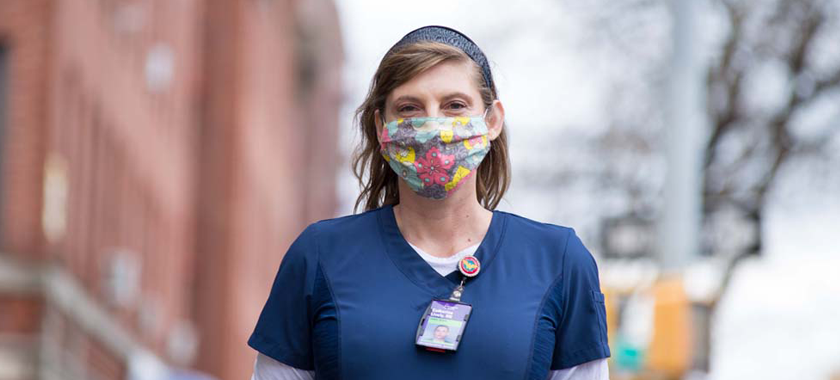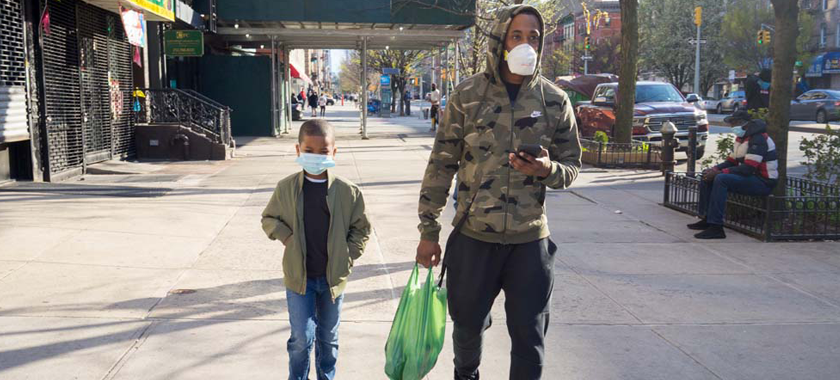
Teaching Museum Studies During a Global Pandemic
How CUNY SPS’s Master of Arts in Museum Studies program prepares the next generation of leaders in the field through real-time learning with professionals at New-York Historical Society.
If you live in or around New York City, you can point to the exact moment when things were forever altered as a result of the pandemic. For many, including those in the MA in Museum Studies degree program at the CUNY School of Professional Studies and their collaborators at New-York Historical Society (N-YHS), that moment hit in March 2020. It was then that Anna Danziger Halperin’s History and Theory of Museums course, which provides a broad introduction to history, philosophy, varieties, and evolving roles of museums through classroom work and an in-person practicum, pivoted to online only. This shift exhibited a real-time look at how N-YHS staff helped the museum to evolve in a time of crisis. Below, we gain insights from Danziger Halperin, who teaches in the CUNY program as part of her 2019-2021 Andrew W. Mellon Postdoctoral Fellowship in Women’s History and Public History at N-YHS, and students from her spring semester course.
Earlier on in the pandemic, CUNY SPS students heard about the Museum and Library’s rapid response collecting initiative known as History Reponds, learning how museum professionals collect history as it happens. They discussed how decisions are made about what gets collected and whose experiences are preserved, hearing about collecting efforts around COVID-19. The program, which was initiated after 9/11, has preserved objects and documents related to marriage equity, Occupy Wall Street, and Women’s March, among other monumental events. Said one student: “I found the discussion of collecting objects related to the pandemic very interesting, especially in thinking about the objects, emails, and other media that matter day by day in quarantine and what will continue to have significance as this progresses.” This semester, they’re hearing how these efforts have continued to evolve to cover the recent Black Lives Matter protests.
They also talked about how exhibitions might look different after re-opening. Would visitors want to touch interactive screens or use audio headsets, for example? What about hands-on materials, like costumes to try on or art materials for families and children? These are ever-present questions that students initially learned about in the spring as museum professionals orchestrated Hope Wanted, a socially-distant outdoor exhibition about the COVID-19 pandemic in New York that launched before the museum even reopened. The space was laid out to encourage visitors to stay six feet apart, and audio material was made available through QR codes so that visitors could use their own devices. In addition to the 50 photographs and 14 audio interviews with the photograph’s subjects, the show included a quiet seating area surrounded by plantings and conducive to reflection where visitors can record their own experiences of the pandemic in an open-sided story booth. “What I took away about museum operations” from the practicum “is that a museum worker must always think on their feet and be willing to adjust–especially with the impact of COVID-19,” said student Bethany Nelson. “We are in a ‘reset moment,’ where we have to figure out how to create meaning without physical spaces to gather in, and how to change programs museums already have to meet the current needs. I was impressed that the New-York Historical Society created an outdoor gallery space this year to allow people to return to museums in a small way,” Nelson added.

The students learned how N-YHS’s Education Department began its History@Home program, bringing free, virtual learning content to families in the earliest days of remote learning. N-YHS’s online programming developed from social studies enrichment programming, where educators would travel to classrooms to present material to students rather than bringing students to the museum itself. Now, as a result of the pandemic, N-YHS educators lead free live, weekly interactive U.S. history classes that are geared towards students in first and secondary school in addition to offering virtual tours which walk students through N-YHS exhibits. Remarked CUNY SPS student Amanda Barlow: “It seems like the N-YHS education department is doing work that is helping not only young people but the entire community, especially during this pandemic, by offering online learning through their History@Home program.”
For students, this type of learning experience is invaluable. “In a strange way, we are lucky to be in this program during the COVID-19 epidemic because it is allowing us to see aspects of the inner workings that we might not otherwise have seen,” said student Kathryn Nash.
The above are just a few ways in which the Master of Arts in Museum Studies program is unique, as it grounds students in theory as well as the practical applications of museum operations, including administration, finance, curation, technology, and education. It’s also part of a conscious effort by N-YHS and CUNY SPS to diversify the field. N-YHS generously offers scholarships to students enrolled in a minimum of six credits in CUNY SPS’s MA in Museum Studies program, providing support to students who are from underrepresented groups or who can demonstrate a commitment to diversity.
-Amy Aronoff, Senior Communications Officer
This post is part of a regular blog series highlighting #NYFAPartner sponsor organizations, and the fourth in our “Get Into Grad School” series on NYFA Current. Follow NYFA on Twitter, Facebook, LinkedIn, and Instagram to see the latest news about each #NYFAPartner. Sign up for NYFA’s bi-weekly newsletter, NYFA News, to receive announcements about future NYFA events and programs.